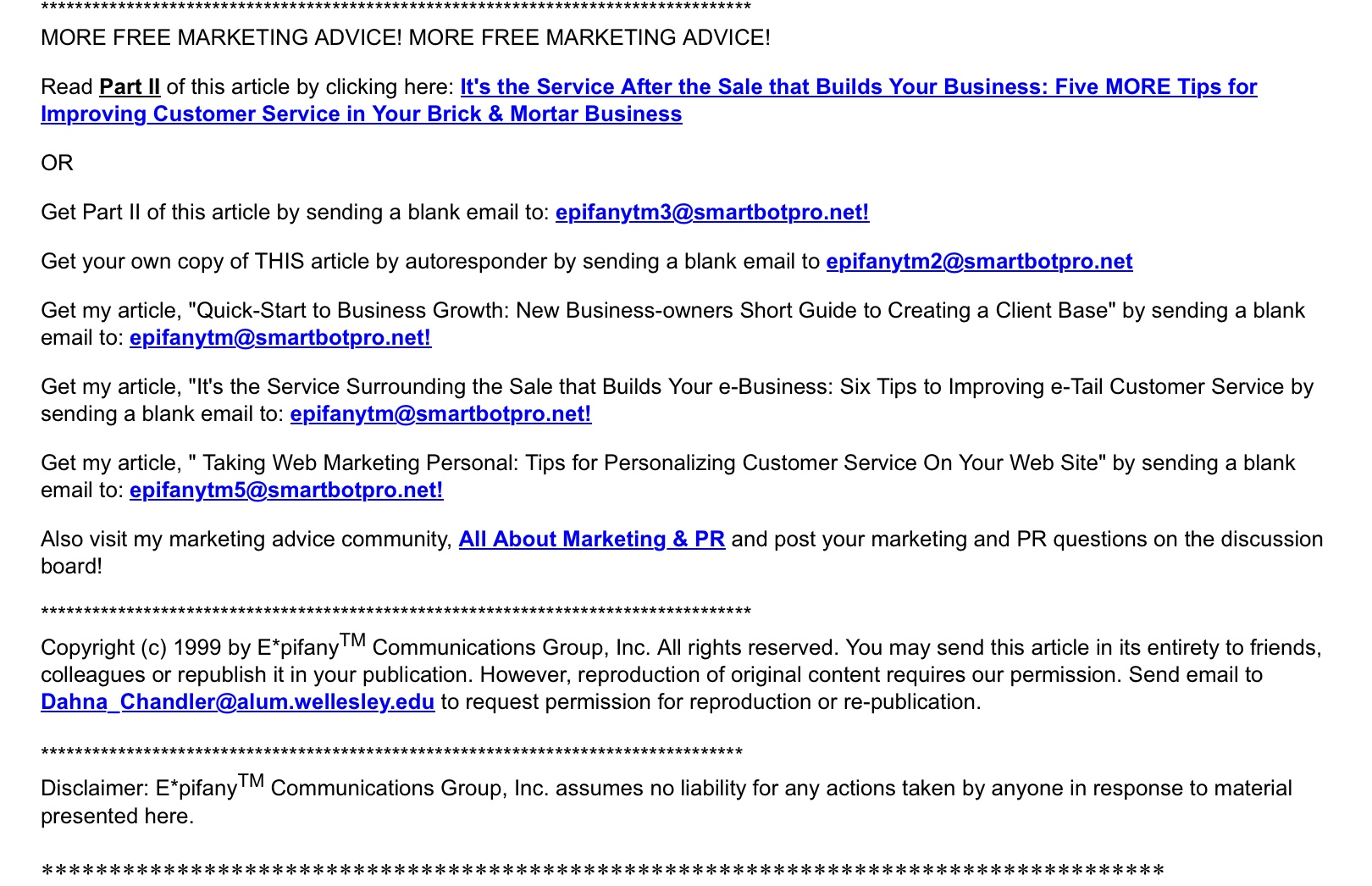I started my first viral content marketing campaign on AOL in 1998. It went global. Here's what I did.

Reading time: 4 1/2 minutes
From the earliest days of my online consultancy in 1997, I understood online networking was essential for reaching business development goals. Even then, I knew it was important prospective clients see me as a recognized expert--a thought leader. That was the only way to create what we now call the "know, like and trust" factor with prospective clients. There weren’t nearly the options available for online networking then as today, but I’d been actively promoting online since 1991, so I knew where to look.
In late 1997, I began interacting with users on AIM, AOL's chat feature platform, which was much like Slack is today. Like Slack, this early social media was a series of message boards on channels users visited to engage in conversations about different issues. Among some users’ challenges was effective small business development, finance, and operations. I was an SME in that area, since I’d grown up with multiple successful entrepreneurs in my family (and their peers). So, I knew I could help them.
I enjoyed answering questions about small business operations and development, and I spent hours on those message boards doing that. I started offering my services as a paid business coach, online marketing, and web writer. I turned my message board answers into my first 'blog post'. I titled the it, “It’s the Service After to the Sale that Builds Your Business: Five Tips for Improving Customer Service.” But I needed a distribution strategy for my work, which became five blog posts.
Content Marketing in the Internet's Infancy
There were limited free tools available for what was then called “internet marketing” back then and the paid tools were pricey. (A domain name cost $60 and a custom website was in the tens of thousands of dollars, and not that attractive when it was finished.)
So, I had to rely on my revelatory approach to marketing and get creative. Using my rudimentary HTML skills, I created my first professional webpage where I posted my early writing portfolio. That was simple since I built my first ever webpage in 1991 for the college event promotions I did at the time. I shared links to my first blog post on AIM and other bulletin boards, but that got time-consuming.
Needing a more efficient way to connect with my growing audience, I used MSN.com to create my first marketing advice community, “All About Marketing & PR,” which was like a LinkedIn group for SBOs. Others readily joined because of my expertise, and soon, I had 300 members, a high number for the time.
I posted the link to my blog post on my discussion boards. Readers raved about how useful my content was and clamored for more. They asked me to write other posts that went beyond help for brick and mortar businesses, to advice for e-commerce businesses, on website personalization, and client development using PR. Remember, this was in 1998.
There was so much demand for my posts, rather than staying up into the wee hours sharing them by email, I found a more efficient method. By then, autoresponders were standard. So, I created a series of them to send my content to readers who requested it, while I sleep nights. These autoresponders, shown below, allowed me to track content requests, data I used to improve my content marketing strategy.

As my posts got shared widely, small magazine publishers began asking me if they could print them in their publications. I happily obliged, because that gave me clips I used to get other writing work on small business development and related subjects.
But my posts also went global, ultimately getting published in seven languages, including Japanese and German. By 1999, I was getting requests from European news organizations, including Agence France Presse. They invited me to join their short-lived independent journalist hub, "Correspondent.com," to which just 1,500 freelance journalists got invited.
This early content marketing campaign was the start of my commercial success as a content marketer. But it also accelerated my career as a journalist, which began a few years earlier.
I quickly got writing work with BET.com, Heart & Soul, industry trade magazines, and other publications and web platforms. In 2003, I became a Black Enterprise contributor, and I won a journalism award for my data-driven, well-researched, interview-centered work with them in 2005.
Content Marketing on the Modern Internet
Much has changed with content development and distribution strategy since the late 90s. But one thing hasn’t. Readers still want content that’s well written, engaging, easily understood, personalized, and immediately useful for solving their problems. Today, especially with the advent and wide use of AI to write content, they expect content they consume to be well-researched, data-backed, expert-driven and well written.
My content supports your readers who want to develop, grow, manage, and enjoy their wealth, especially through their businesses. It also supports their wealth advisors in their business development and client retention efforts. It may not be as easy to make your content “go viral” today. You’re competing for reader share of attention with copious information in all formats.
But, if it’s written using effective storytelling strategies and wrapped in a robust content strategy, it will cut through all the noise blasting at your target readers experience. Done well, it gets their attention, and causes them to respond in a way that benefits you both, while meeting your brand’s business goals and expectations. Contact me to learn more about how I can help you achieve your content marketing objectives.
(c) 2023. Dahna M. Chandler for The Financial Communicator, Inc., a division of Thrive Media Collaborative, Inc. All rights reserved. This blog content may not be reproduced or reposted in whole or in part or used for AI applications without express written permission from the author. Reading time estimated by Read-O-Meter.
Image: Scott Beale on Flickr
